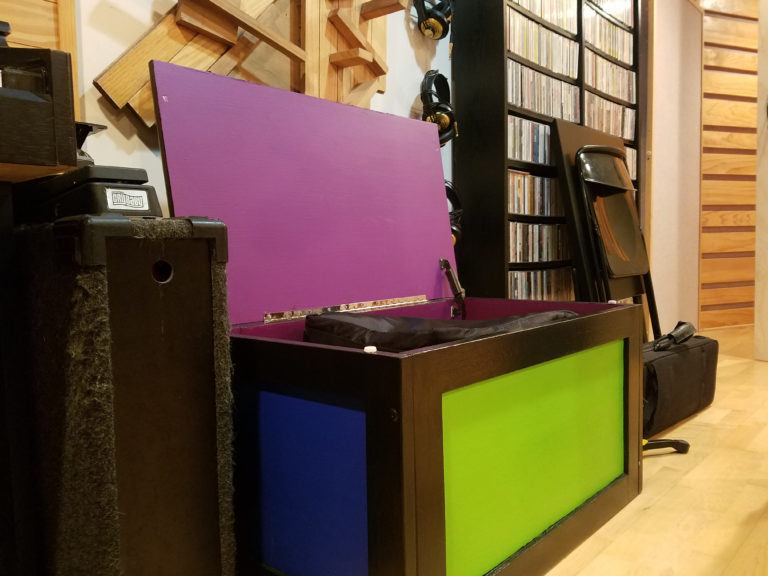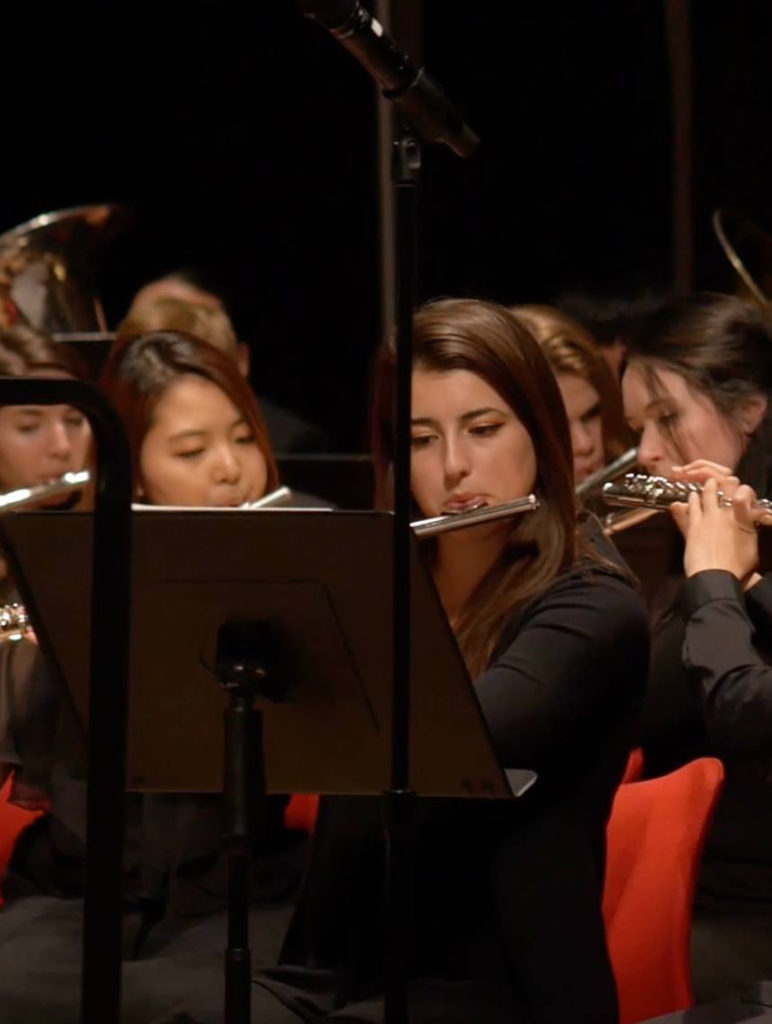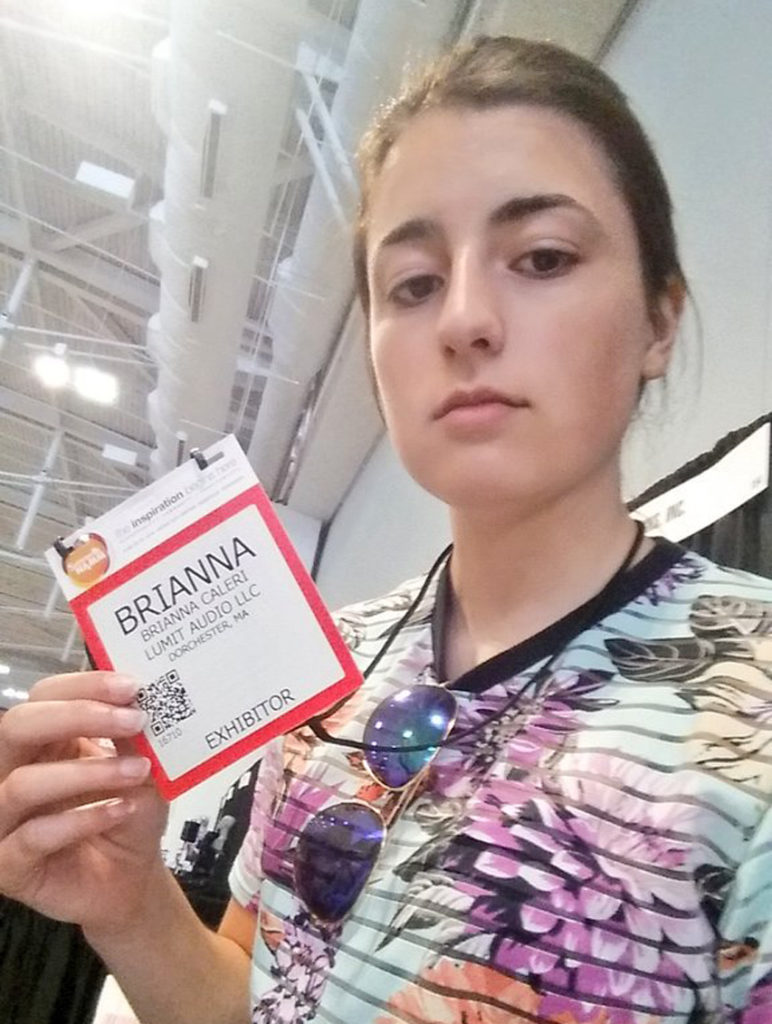Guess who’s back?
Hi, all. Brianna here! If you’ve been keeping up for a few years (congratulations, and thanks for sticking around), you might remember me as one of Barry’s several high school interns. I’m back for some help around the studio now, including some construction projects and a brand new website! Let’s catch up…
After my internship in 2013, I left you with this post talking about a few weeks in the life of a music producer. Soon after, Barry talked me into trying The Artist’s Way. One of the star performers in Barry’s ever-expanding list of book recommendations, The Artist’s Way really set me up to pursue a more productive and purposeful creative life. To kick off that life, I settled on a Music major at Northeastern University with a concentration in Music History and Analysis. I grew to love it, and the freedom it allowed me to be cerebral. While there, I worked at a custom guitar shop in Texas (and learned how it feels to work on something you truly love for almost no money at all), the maker of a digital audio workstation in Boston (and learned how brutal startups can be), and a Boston-based branding agency (and finally found the validation of writing for appreciative clients). I wrote for the school’s culture magazine, reviewing shows and redistributing tidbits of music history. Sometimes I sent Barry emails with laundry lists of creative endeavors and frustrations, and heard about his own busy schedule in schools and the studio. When I graduated, I went through The Artist’s Way again, this time with friends I made in college. And when I came back after graduating, Barry had a long list of projects ready for me to tackle.
Studio Upgrades
I like to take on the tedious first, and we did have a game plan. We thought we’d start clearing room in the studio — both mental and physical. We’d clear a long list of things Barry had been wanting to do, but didn’t have time to streamline himself. We’d fill the free space later, and invite more work in as we got more done. Our plan still is to keep plugging away and using the energy of the work accomplished to propel us forward into wider-reaching projects and ideas.
We started with the mammoth pile of sheet music that started accumulating . . . well, when there were still mammoths around. We wanted to sort through the well-over 2,500 titles and match them to files already in Barry’s iPad, for a more portable library for private event gigs. The dullest story in the world, which I won’t tell you, ends with us taking photos of unique copies for the iPad, saving a few to find later, if we need them, and deciding a whole lot of music wasn’t worth saving at all. It’s dull to recount, but was a really great way to get back into studio work. I had time to think about things I usually put off, and more than enough time to listen to new music. I realized how many standards I’m still not familiar with. I remembered that Shaggy exists. And Barry opened up shelves of space for new inspiration to live on.
Since I can’t get enough of artist brain activities (repetitive or neutral tasks that give you time to exercise the creative, childlike part of your brain), I also started a toy-chest restoration project. Barry had a wooden chest he’d painted years ago for his kids — it’d been gathering dust in the garage for years more. He gave me creative control and several cans of paint leftover from his technicolor home renovation. We painted the framework black for a little bit of an edge, the side panels lime and electric blue, and left a happy surprise of fuchsia on the entire inside, like a velvet lining. Now there’s a fun way to store clutter in the form of gig bags. And if Barry ever leaves music for a different kind of live performance, he can always start pulling rabbits out of it.

But he’s committed for now, so we decided it was about time to repurpose one more thing: a heavy glass table, 3’ x 5’, from his sister’s apartment in the 80s. It was his kitchen table at the University of Miami, then his Mom’s, then his again, before his wife finally banished it from the house. Barry’s vision was a floor-to-ceiling wooden frame around the glass tabletop, as a sort of semi-soundproof recording “booth” that could be pushed around to modify the space. In a day, we put together a formidable wall in glass and pine to match the rest of the studio, and settled on some knotty pine plywood on hinges to create a trifold that would enclose the performance space against the corner of the room. On each plywood wall, we hung a fabric-wrapped absorption panel. Because there’s only one layer of material on each wall, it’s really only halfway to being truly soundproof, but it greatly reduces any white noise coming from the computers, air conditioning, or house inhabitants. I tried to get the kids to yell at me through it, but I’m a worse influence than they’re ready for. We’ll do a more vigorous test when they’re both teenagers.

Website Makeover
Once the physical space was cleared and remodeled, we started thinking in earnest about the Bigger Picture, starting with Barry’s website. The site then was functional, but outdated and complicated. We wanted bring Barry more into focus as an accessible working producer, eager to solve problems for musicians. Barry’s priority was to emphasize how he can help — mine was to put it out there in a clean and modern way.
Since we wanted to keep a lot of the same information while revamping the style, we archived the entire old website for reference. I told Barry I would like to dramatically streamline the experience, ideally, delivering the full story without even leaving the home page. We searched for WordPress themes that would make a long scroll though the homepage intuitive and engaging. After a little poking around design blogs, we decided to narrow our search to themes based on parallax scrolling, in other words, scrolling past background images to create a sense of layers and responsiveness. We chose the theme HashOne, which also features fun animations that make the experience feel like a series of events, instead of skimming a static page.
Pulling text from the old website, editing or reframing it, and writing new sections entirely, we created a wireframe, or a roadmap to what the entire finished website should look like. We trimmed a lot of fat. What do people really want to learn? What are they willing to ask more questions about?

Site Tour
The new website starts by shouting Barry’s name, and displaying slides to call attention to studio news. The next section introduces him and his goals with a personal message, and links to a page of specific credentials that someone further down the pipeline might want to see. We’ve “hidden” them from the home page so they don’t interrupt the discovery process with too many details. Next on the home page, visitors can choose categories of music samples and read blogs about the process. After they’ve listened, they move on down to a services section, where they can click through to a more detailed grid. But we kept the descriptions simple, because we would still rather hear from people and have productive conversations than try to over-explain a process that can change a lot from client to client. The composition section directs curious clickers to the Credentials page, where they can see a discography, and the music education section brings them to a new page dedicated just to private instruction and student resources. There’s even a student-made music video, like an easter egg, when you click to expand music education on the home page. To wrap it up, like a series of footnotes, are testimonials, blog updates, and a succinct contact section. Anything the reader wants to know, by then, can spark a conversation over email or social media.
What’s Next?
I’m sticking around for now, and some of our next to-dos involve populating the blog and starting a mailing list. We have lots of other ideas that we’ll start testing out on you, including music videos and maybe even instructional content. If you read ALL THAT (and even if you didn’t) I want to hear from you! Email us about what you want to see on the blog or in a newsletter, or leave a comment below.



